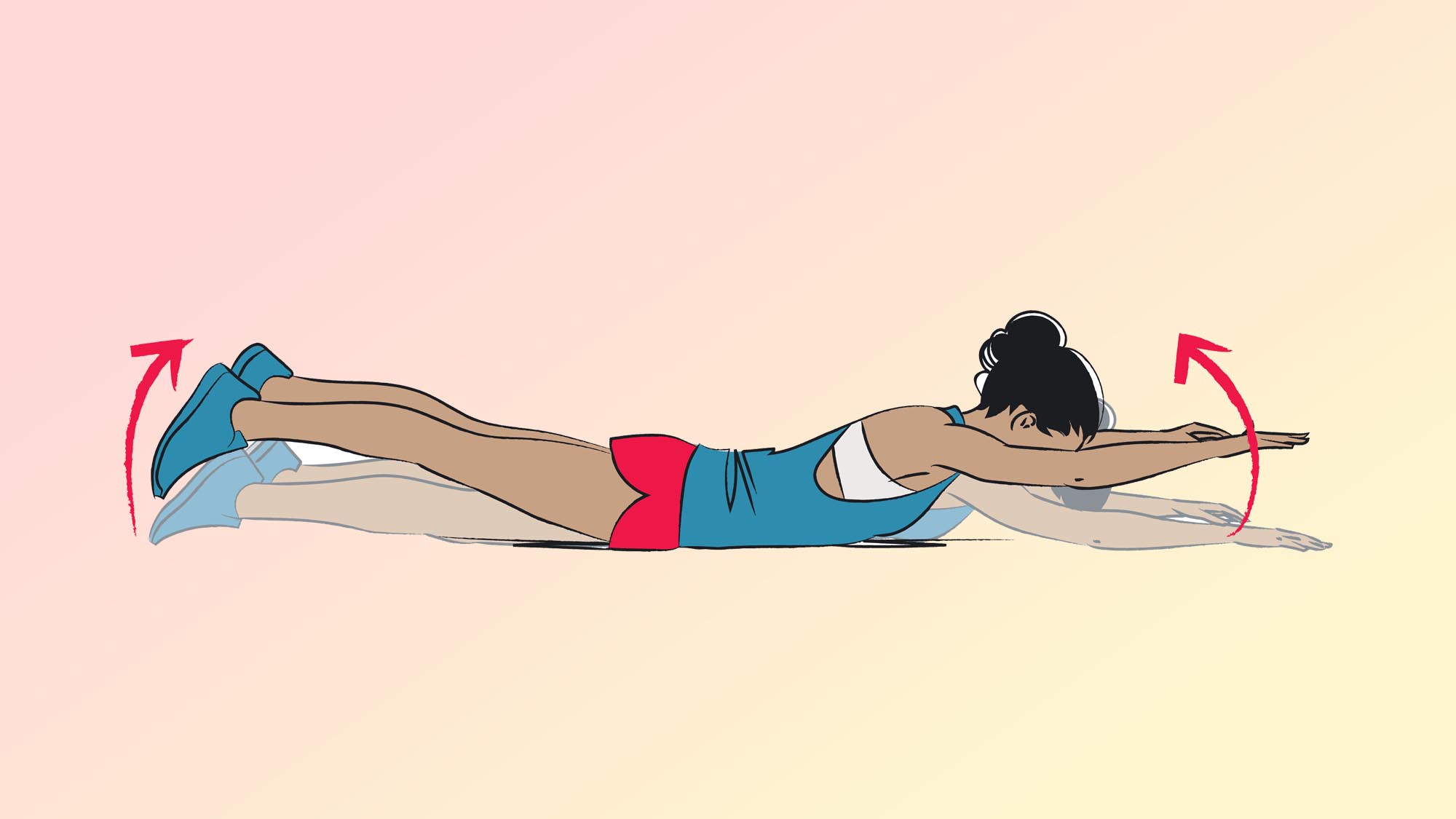
I’m a personal trainer, and back extensions are one of the best compound exercises for strengthening the back, glutes, hamstrings and core muscles. It’s easy to get it wrong and hurt your lower back doing the exercise, so I cover how to do it safely below and the many benefits you could expect.
Back extensions primarily target and strengthen the posterior chain muscles, which are the muscles that run down the back of your body, and your core muscles will also activate to help support your torso and drive movement.
To execute it, you’ll need a back extension bench or similar — a staple in most gym set-ups — which also fits easily into home gyms as part of the best home gym equipment, but you could do it on the floor too. Read on to see why this is the one move worth adding to your strength programs and how to do it.
How to do back extensions

As we mentioned, you’ll need a back extension bench or similar to do the exercise. Move slowly, with control, and avoid swinging up and down during the exercise or arching your spine.
Start with 2-3 sets of 8-12 reps and build from there.
- Rest your feet on the footplates and thighs on the bench with your hip joints just in front of the bench
- Engage your core, gently squeeze your glutes and back muscles
- Keep your spine and neck neutral, and pull your shoulders back and down
- Hinge forward at the hips and lower your chest toward the floor and your thighs
- Pause, then drive back to your starting position, creating a straight line from head to toe.
What are back extensions good for?
The back extension builds strength and stability in the muscles that hug and protect your spine — the erector spinae muscles. If you suffer from back pain, the exercise could also strengthen your hips and improve range of motion in your spine, improving symptoms of back pain and sciatica (plus, these are the best exercises for sciatica if you need more inspiration).
That said, if you suffer from back pain, you should always seek medical advice before trying any new exercises. The move, also known as hyperextensions, uses a bending forward motion to work the muscles down the back of the body, including your glutes, through hip extension and even the rear deltoids during some variations.
Get instant access to breaking news, the hottest reviews, great deals and helpful tips.
You don’t need weights to do it, as gravity acts as resistance during the exercise, meaning you could build back strength as part of a strength training program with or without weights. And the research backs up! You could even improve the quality of other similar movement patterns like deadlifts, which use hip extension and the same muscle groups.
Besides a strong back, core and set of glutes and hamstrings, the move could help keep you safe during functional training and heavy compound lifts, improve running efficiency and posture and prevent injury during your daily activities and exercise.
Back extensions: Variations
If you plan on adopting one of the variations below, I recommend one of the best yoga mats for supporting your hips and elbow joints.
Supermans

This can be used as a bridging exercise to develop a strong back before moving to the bench. You can do it from the floor and target the same muscle groups by extending and lifting both arms and legs off your exercise mat and slowly lowering back to the floor. Keep a neutral neck and look towards the mat as you move. You can learn how to do Supermans in detail here.
Upward facing dog

If you’re new to back extensions or returning from injury, adapt to an upward-facing dog instead. This one’s for the yogis.
How:
- Start on your stomach with legs extended behind you
- Place your hands on the mat just in front of your hips and press through them to lift your chest
- Gently lift your hips away from the floor and pull your shoulders down
- Look ahead and hold. Lower back to the ground.
If this feels too strong, place your elbows down instead and keep your hips supported on the mat, which should take some effort away from your lower back. For a deeper stretch, place your elbows or hands-on yoga blocks.
To progress the back extension exercise on the bench, place your hands behind your head or hold a weight close to your chest like a barbell plate or best adjustable dumbbells. Some benches can be modified to different degrees, providing a greater range of motion and making back extensions harder.
Back extensions: Common mistakes
Overextension and hunching are two common mistakes I see during back extensions, putting more strain on your muscles, particularly around the mid to lower back. That means rounding through your upper back as you lower down or leaning too far back at the top of the move.
To avoid this, think about creating a straight line from head to toe in the starting position. Pull your shoulders down and engage your core, always moving with a neutral spine. Ensure both feet stay planted down to create a stable base to move from.
More from Tom's Guide
After our fitness challenges at Tom's Guide, we love stretching out sore muscles. Here are some favorites.
- 7 best kettlebell ab exercises for strengthening your core muscles
- Sciatica? Try these 3 doctor-approved exercises for pain relief
- The best stretches for tight hip flexors.

Sam Hopes is a level 3 qualified trainer, a level 2 Reiki practitioner and fitness editor at Tom's Guide. She is also currently undertaking her Yoga For Athletes training course.
Sam has written for various fitness brands and websites over the years and has experience across brands at Future, such as Live Science, Fit&Well, Coach, and T3.
Having coached at fitness studios like F45 and Virgin Active and personal trained, Sam now primarily teaches outdoor bootcamps, bodyweight, calisthenics and kettlebells.
She also coaches mobility and flexibility classes several times a week and believes that true strength comes from a holistic approach to training your body.
Sam has completed two mixed doubles Hyrox competitions in London and the Netherlands and finished her first doubles attempt in 1:11.
